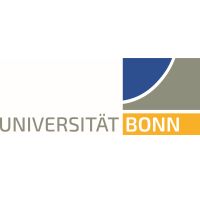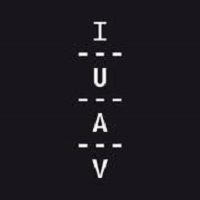托福写作答题技巧大揭秘
Editor:Mark| Time:2025-02-22在托福考试中,写作部分常常让考生们感到头疼。它不仅要求考生具备扎实的英语语言基础,还需要掌握一定的答题技巧,才能在规定时间内写出一篇高质量的文章。本文将深入探讨托福写作的答题技巧,帮助考生们在考试中取得更好的成绩。
清晰审题,明确写作方向
托福写作的题目类型多样,包括独立写作和综合写作。在开始写作之前,仔细审题是至关重要的。对于独立写作,考生要理解题目所表达的核心观点,并确定自己的立场。例如,题目可能是“Do you agree or disagree with the following statement: Technology has made children less creative. Use specific reasons and examples to support your answer.”考生需要明确是同意还是不同意科技使孩子缺乏创造力这一观点,然后围绕自己的立场展开论述。
对于综合写作,考生要先阅读一篇学术文章,然后听一段与文章相关的讲座,最后根据阅读和听力内容进行写作。在审题时,要注意找出阅读文章和讲座的主要观点以及它们之间的关系。比如,阅读文章可能认为某种环保措施不可行,而讲座则反驳了这一观点,考生需要准确把握这些信息,在写作中清晰地呈现两者的异同。
合理规划文章结构
- 独立写作结构
- 开头段:开头要简洁明了,迅速引出话题,并表明自己的立场。可以用一个引人入胜的句子来吸引读者的注意力,比如引用一句名言、提出一个有趣的问题或描述一个相关的现象。例如,在讨论科技对孩子创造力的影响时,可以这样开头:“In the age of rapid technological advancement, the question of whether technology has stifled children's creativity has become a hot - button issue. In my opinion, while technology does pose some challenges, it has also opened up new avenues for creativity.”
- 中间段:一般建议写2 - 3个中间段,每个段落围绕一个分论点展开论述。分论点要具体、有说服力,并与自己的立场紧密相关。每个段落都要有明确的主题句,然后通过举例、对比、解释等方式进行论证。比如,在论述科技促进孩子创造力的一个分论点时,可以说:“Technology provides children with access to a vast amount of information, which serves as a rich source of inspiration. For example, with the help of the Internet, kids can explore different cultures, learn about historical events, and discover various art forms that they might not have been exposed to otherwise. This exposure broadens their horizons and stimulates their imagination, leading to more creative thinking.”
- 结尾段:结尾要总结全文,再次强调自己的立场,并可以适当展望未来。例如:“In conclusion, technology, far from making children less creative, has actually become a powerful tool in nurturing their creativity. As long as we guide children to use technology wisely, they will continue to thrive in a creative environment in the digital age.”
- 综合写作结构
- 开头段:概括阅读文章和讲座的主要内容,指出两者的关系。比如:“The reading passage argues that [reading passage's main point], while the lecture challenges this view by presenting [lecture's main point]. The lecture provides several counter - arguments to refute the reading.”
- 中间段:按照逻辑顺序,分别阐述阅读文章和讲座的观点及论据,对比两者的异同。可以一段讨论阅读文章的一个观点,下一段讨论讲座对该观点的反驳。例如:“The reading claims that [reading's first point] because [reason for reading's first point]. However, the lecture disputes this by stating that [lecture's counter - argument]. Another point made in the reading is [reading's second point], but the lecture counters with [lecture's counter - argument for the second point].”
- 结尾段:总结阅读文章和讲座的主要分歧,再次强调讲座的观点更具说服力。例如:“In summary, the lecture effectively challenges the claims made in the reading passage. By presenting alternative explanations and evidence, it shows that [lecture's main conclusion] is more reasonable than [reading's main conclusion].”
丰富论证方法
- 举例论证:通过具体的例子来支持自己的观点,使文章更具说服力。比如在论述团队合作的重要性时,可以举苹果公司的例子:“Apple's success is a prime example of the power of teamwork. Steve Jobs, with his visionary ideas, worked closely with a team of talented engineers, designers, and marketers. Together, they created revolutionary products like the iPhone, iPad, and Macintosh, which have changed the world. Without the collaborative efforts of the team, Jobs' ideas would not have been translated into such remarkable achievements.”
- 对比论证:将不同的事物或观点进行对比,突出自己观点的优势。例如,在讨论传统教育和在线教育时,可以说:“Traditional education often relies on face - to - face interactions between teachers and students in a physical classroom. In contrast, online education offers greater flexibility, allowing students to learn at their own pace and from anywhere in the world. This flexibility enables students to balance their studies with other commitments, such as work or family, which traditional education may not easily accommodate.”
- 因果论证:阐述原因和结果之间的关系,说明为什么会有某种现象或观点。比如在解释人们喜欢旅游的原因时,可以说:“People are increasingly drawn to travel because it broadens their perspectives. When they visit different places, they are exposed to diverse cultures, traditions, and ways of life. This exposure causes them to gain a deeper understanding of the world and themselves, which in turn enriches their lives and makes them more open - minded individuals.”
注意语言表达
- 词汇运用:使用丰富多样的词汇来提升文章的质量。避免重复使用相同的词汇,可以通过同义词替换、词性转换等方式来丰富表达。例如,用“attractive”替换“nice”,用“beneficial”替换“good”等。同时,要注意使用一些高级词汇和短语,但不要滥用,要确保准确恰当。
- 句式结构:运用不同的句式结构来展示语言能力。除了简单句,适当使用复合句和复杂句,如定语从句、状语从句、宾语从句等。例如:“The new policy, which was implemented last month, has had a significant impact on the company's operations. This is because it aims to streamline processes and improve efficiency, thus leading to better overall performance.”
- 语法正确:仔细检查语法错误,确保句子结构完整、主谓一致等。语法错误会严重影响文章的质量和得分。可以在写作完成后,快速浏览文章,重点检查一些容易出错的语法点。
总之,掌握托福写作的答题技巧是取得高分的关键。通过清晰审题、合理规划文章结构、丰富论证方法以及注意语言表达等方面的努力,考生们能够在托福写作中发挥出自己的最佳水平,实现自己的留学梦想。希望以上内容对广大托福考生有所帮助,祝大家考试顺利!





